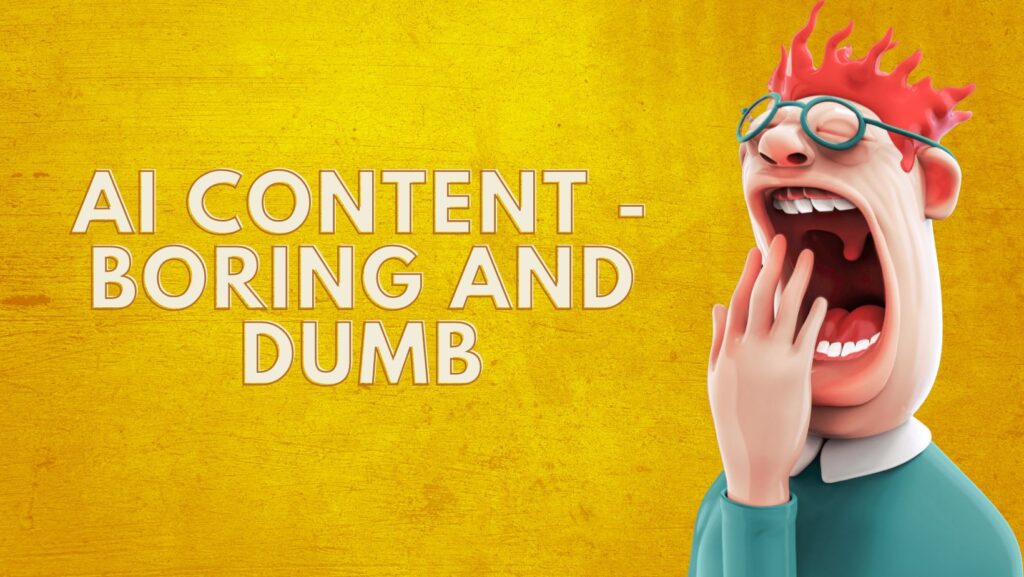ChatGPT is making waves in the SEO world, leaving mediocre copywriters feeling sad and frustrated as they struggle to find $1 for 100-word offers again.
I don’t use ChatGPT to write articles for wpctrl.com, because I like expressing my thoughts, but I have some experience with other projects where I’ve experimented with AI-generated content.
And I can tell you this for a fact – AI-generated content can be spotted from the first look.
Unless…you put some work and make it yours, edit it, and format it in a nifty way.
I have collected the top 5 signs that indicate you’ve simply copied and pasted an AI-generated article directly from ChatGPT.
1. The Title Structure
By now, you should know that prompting the AI is 90% of the work. Providing clear and detailed instructions on how you want your article to be written is essential for the quality of the output.
Typically if you tell chatGPT to write you an article most of the time it will use the same model (Unless you provide the full SEO title).
Websites that provide ready-to-use SEO prompts or Chrome extensions like AIPRM can help you diversify the prompts used, but even then the titles still look the same.
[Your Keyword or Topic]: What You Need to Know or The Ultimate Guide, or A Journey Through History
You get the point after the “:” the things look very unnatural and the same. The most important – there is a pattern.
What can you do to improve your titles?
The best thing is to write it by yourself. If you are really bad at coming up with a title, ask chatGPT to give you 3 or 5 SEO titles right after it finishes your article.
You can try some of these prompts from seo.ai.
Prompt;
“Write 3 examples of alternative blog post titles with higher CTR for [topic].”
Prompt;
“Suggest compelling blog post titles related to the following list of SEO keywords:…”
Prompt;
“Suggest 5 blog post title ideas for the keyword [keyword] targeted [audience].”
2. Repetitive intros that tell the same thing
Most of the SEO articles generated by AI follow the same structure. Repetitive phrasing and sentence structures.
- A short introduction telling what this article will be about
You will often end up with the first paragraph with the heading “Introduction” which will include something like this:
“In this guide, we’ll take a closer look at [your topic or keyword]
The purpose of this article is to explore the advantages and disadvantages of [ your topic]
In this article, we’ll provide you with a comprehensive guide on how to…
It is essential for content creators to carefully review their AI-generated text and assess its overall quality. Repetitious paragraphs are common for 1-click AI generators, especially on harder topics that will require more data and info.
3. Same length paragraphs
While symmetry can be beneficial in various aspects of life, it may not always be the optimal choice for your article.
When every paragraph in your text is of identical length, it could indicate a potential issue.
One of the most apparent red flags is the absence of nuance and creativity, suggesting that the content lacks the personal touch of a human writer who genuinely cares about their work.
4. Final heading named “Conclusion”
Another big tell is the wrap-up of your article, while it looks natural to have something like “Conclusion” to finish your article, if this is in 99% of your articles again it screams AI.
Try to have original headings, that will also be better for your SEO. The heading named “Conclusion” says nothing about what’s in it.
5. No images, quotes, links, or special blocks

Just a wall of text.
Is this what most of your posts look like? Copy-paste is pretty easy, but won’t get you anywhere.
You have to put in the additional work.
Add some value, download some images or other graphic content, and design the blog post as a landing page.
Make it human-like, silly, throw a joke, cite someone, add a video, put an emoji anything.
6. The article lacks depth and fails to offer any meaningful value

AI writers may struggle to capture the nuances and intricacies of certain subjects, resulting in shallow and unengaging articles that fail to deliver substantial insights or valuable information.
It is essential for content creators to carefully review their AI-generated text and assess its overall quality.
7. Too much “fluff”
Fluff in AI-generated content refers to non-essential words or information that do not enhance the main point of the article.
It includes unnecessary details, repetitive phrases, overly descriptive language, and verbose content that adds length without value.
Fluff can also stem from the overuse of adverbs, adjectives, and phrases that do not contribute substantially to the message.
What can you do to reduce the fluff?
You can simply prompt the AI to remove all the fluff, then paste your text.
The key is to ruthlessly edit the AI-generated content to remove any unnecessary words or information while preserving the core message and value for the reader. This improves engagement, readability, and search engine optimization
For some topics, the AI writer is still not good enough.
This issue becomes particularly evident when attempting to create product reviews using AI-generated content.
In order to provide a comprehensive and informative review, it is crucial to highlight specific features, benefits, and drawbacks of the product in question.
However, AI-generated text may fall short of delivering the necessary level of detail and specificity, resulting in reviews that lack substance and fail to guide potential buyers effectively.
If you read your text and find it boring and lacking any real value, chances are big that your readers will do the same.
You can’t create great product reviews if you tell nothing in particular.
Conclusion
In conclusion, while AI-generated content has made notable progress, it still has limitations when it comes to producing high-quality articles on certain topics.
Recognizing the potential drawbacks and shortcomings of AI-generated text is crucial for content creators who seek to deliver engaging, valuable, and informative content to their readers.
By carefully reviewing and supplementing AI-generated content with human expertise, creators can overcome these limitations and provide readers with content that is both engaging and meaningful.
Disclosure: Some of the links on the page may contain a ref code (affiliate links), that tells the other side that we have sent you. If you liked what we suggest and you make a purchase, we may receive a commission.









Leave a Reply